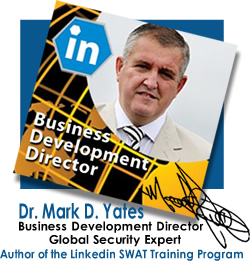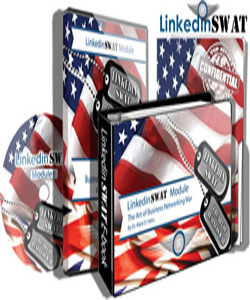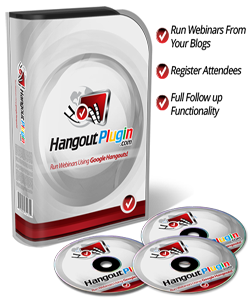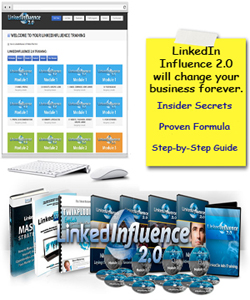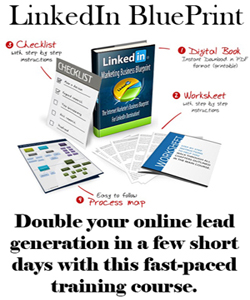5 Keys to having success on LinkedIn
Are you leaving your professional branding up to luck?
Five Secrets to your Success on LinkedIn
By M. Scott Meester
2013 has brought several milestones for the largest professional network on the planet. First they celebrated their 10th birthday and second their 200 millionth member. Along with those milestones they have implemented a new search algorithm that has caused havoc for a multitude of users.
The amount and type of data stored by LinkedIn is mind-blowing and there are infinite ways to slice and dice it. Put yourself in the shoes of potential customers, clients or future employers and search for yourself without using your name. How do YOU look? Can they even FIND you or your business?
As with most users of LinkedIn you probably didn’t find yourself on the 1st, 2nd or even in the top ten search result pages, right? You’ve built your LinkedIn profile, updated your work experience and you’re all set to launch your job search or grow your business. So why in the world are you not showing up in the searches? How do you make sure that people and opportunities can actually find you?
It all comes down to knowing more about the L.I.S.A (LinkedIn Search Algorithm) and L.I.P.R. (LinkedIn Profile Rank) and then optimizing your profile in-order to take advantage of the little quarks that define LISA LIPR.
When people search LinkedIn, the results are sorted by relevance and displayed using the following criteria:
• 1st level connections with profiles that are complete and have the most in-common
• 1st level connections with incomplete profiles and have the least in-common
• 2nd level connections
• 3rd level connections
• Shared group members (outside of your network)
• Everyone else (those outside your network)
So what does this mean to you and I? Because this is the default search algorithm for the vast majority of people it’s extra important to:
1. Be a 1st degree connection to as many people as possible. You can connect to as many as 30,000 professionals and can send up to 3,000 invitations, why not maximize your exposure?
2. Have a profile that’s 100% complete including a profile picture, professional headline, your last two jobs and at least FIVE recommendations, etc. LinkedIn will walk you through the process and let you know once your profile is 100% complete. Anything less than 100% completeness is not only hurting you from a LIPR perspective, it’s also less-than-impressive to anyone who happens to read your profile.
3. USE ALL FIELDS AVAILABLE TO YOU.
You can join up to 50 groups, so take advantage of industry, alumni and interest groups to reach more people. You have 120 characters available to you for your headline. Use as many of them as possible to create a descriptive and interesting headline. You have 2000 characters for your summary and 1000 characters for your interests section, use them. LinkedIn allows you to choose up to 50 skills, if you’ve selected anything less, you’re putting yourself at a disadvantage. Make full use of the fields and sections available to you to paint a detailed picture, reinforce your brand and make your profile really work.
4. KEYWORDS IN CERTAIN SECTIONS RANK HIGHER.
A LinkedIn profile has many different sections, but LinkedIn’s Search Algorithm likes some of them better than others. Keywords in your Name, Headline, Company, Job Titles and Skills rank higher in the search results. If these key fields are blank or filled with generic terms, then you fall to the bottom of LIPR pile. Once you have optimized these fields you’ll be amazed at how quickly your LIPR shoots up.
5. DO NOT OVER USE KEYWORDS, SOME SECTIONS DON’T RANK AT ALL.
Sorry, but placing keywords in your contact section does nothing since this section is excluded from LISA. Don’t cut & paste a list of keywords into your summary either, it is not interesting to read nor does it benefit your LIPR that much.
5-A. USING A VARIETY OF KEYWORDS THAT MEAN THE SAME THING WILL HELP.
Think about all of the different ways of saying the same thing and be varied in your language when writing your profile. Maybe you’re a recruiter, think of many different ways of saying the same thing: recruiting, recruitment, sourcing, staffing, talent search, headhunter, etc.. Use these terms in the correct context so that they are meaningful and won’t turn off your audience.
An optimized LinkedIn profile can have far-reaching effects. A recent analysis of 100,000 profiles found that LinkedIn was the network MOST often appearing at the top of Google search results. This means that job offers, clients, business deals, etc. could be pouring in from both LinkedIn as well as external searches from the web. Make sure that your profile is optimized so that opportunities come your way and to be sure that your audience likes what they see when they get there.
😯 M. Scott Meester is President of eTroop.com and blogger on successwithlinkedin.NET for the Recommendation Exchange group. © 2013 M. Scott Meester




